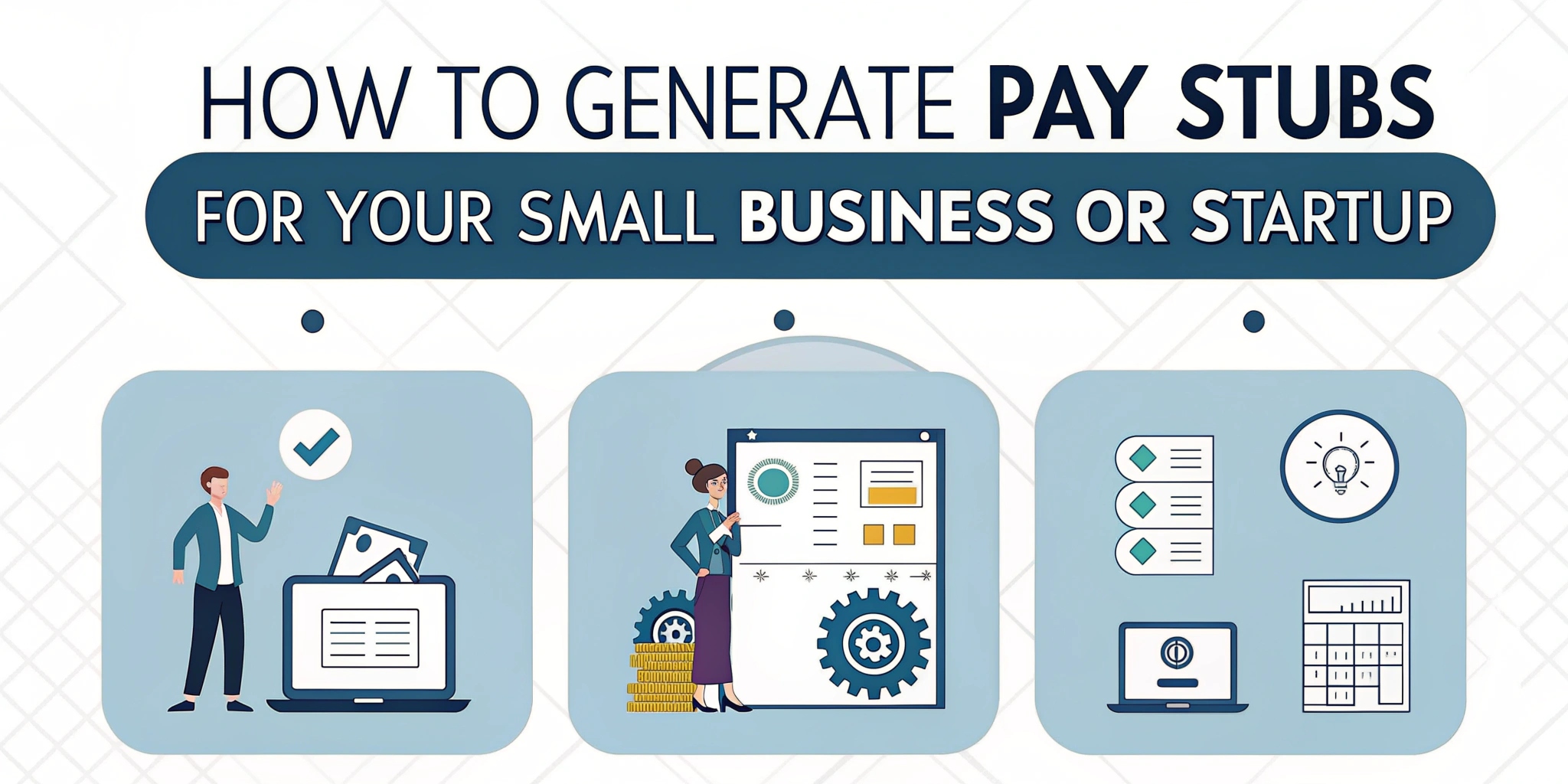
How to Generate Pay Stubs for Your Small Business or Startup
Managing payroll is a critical part of running any small business or startup. One essential document in this process is the pay stub a detailed record that outlines an employee’s earnings, deductions, and net pay. Generating accurate pay stubs not only ensures transparency and compliance with tax laws but also builds trust with employees. If you’re just getting started, here’s a step-by-step guide to help you create pay stubs efficiently.
What Is a Pay Stub?
A pay stub, also known as a paycheck stub or earnings statement, is a document that accompanies an employee’s paycheck. It provides a breakdown of:
● Gross wages earned
● Hours worked (if applicable)
● Taxes and deductions (federal, state, Social Security, Medicare)
● Other withholdings (benefits, garnishments, etc.)
● Net pay (take-home income)
Even if you’re paying employees via direct deposit, providing a pay stub is a professional and often legally required step.
Why Are Pay Stubs Important for Small Businesses?
1. Legal Compliance: Many U.S. states and other countries mandate that employees receive pay stubs.
2. Proof of Income: Employees use them for loan applications, rentals, and more.
3. Transparency: Pay stubs help prevent disputes about hours, wages, or deductions.
4. Record-Keeping: Maintaining pay stub records can simplify tax filing and audits.
Step-by-Step Guide to Generate Pay Stubs
1. Gather Employee Information
You’ll need the following details:
● Full name and address
● Employee ID (if applicable)
● Job title and department
● Pay rate (hourly or salary)
● Federal and state tax withholding information (W-4)
2. Choose Your Payroll Schedule
Decide whether you'll pay employees weekly, biweekly, semimonthly, or monthly. Consistency is key to avoid confusion or errors.
3. Calculate Gross Pay
● Hourly employees: Multiply hours worked by hourly wage.
● Salaried employees: Divide the annual salary by the number of pay periods.
Include any bonuses, overtime, or commissions if applicable.
4. Deduct Taxes and Withholdings
Use current tax tables to calculate:
● Federal income tax
● State and local taxes
● Social Security and Medicare
● Benefits (health insurance, retirement contributions)
● Any wage garnishments or miscellaneous deductions
5. Determine Net Pay
Subtract all deductions from gross pay to arrive at the employee’s net pay, which is their take-home amount.
6. Use a Pay Stub Generator Tool
Manually creating pay stubs can be time-consuming and error-prone. Fortunately, there are several online pay stub generators that simplify the process. These tools let you input the data and instantly generate downloadable, printable, or emailable pay stubs.
Some popular options include:
● Paystubgenerators.com
● Intuit QuickBooks Payroll
● Wave Payroll
● ADP
● Gusto
Make sure to choose a tool that offers customizable templates and complies with your local tax laws.
7. Distribute Pay Stubs
Once generated, share the pay stubs with employees via:
● Email (PDF format)
● Printed copies
● Through an employee self-service portal (if you use payroll software)
Tips for Accuracy and Compliance
● Double-check tax rates and deductions.
● Keep digital or physical copies of all pay stubs.
● Update employee info as needed.
● Use secure platforms to protect personal data.
● Consult an accountant or tax advisor if unsure about deductions or regulations.
Benefits of Automating Pay Stub Generation
● Saves time and reduces manual errors
● Enhances professionalism
● Boosts employee trust and satisfaction
● Helps during tax season and audits
● Supports scalability as your business grows
Conclusion
Creating accurate pay stubs is a simple yet crucial task for small business owners and startup founders. By using reliable payroll tools and following legal standards, you can streamline your operations and maintain a transparent, professional relationship with your employees. Whether you're hiring your first employee or scaling up, investing in a good pay stub generator will save time, reduce stress, and ensure compliance.